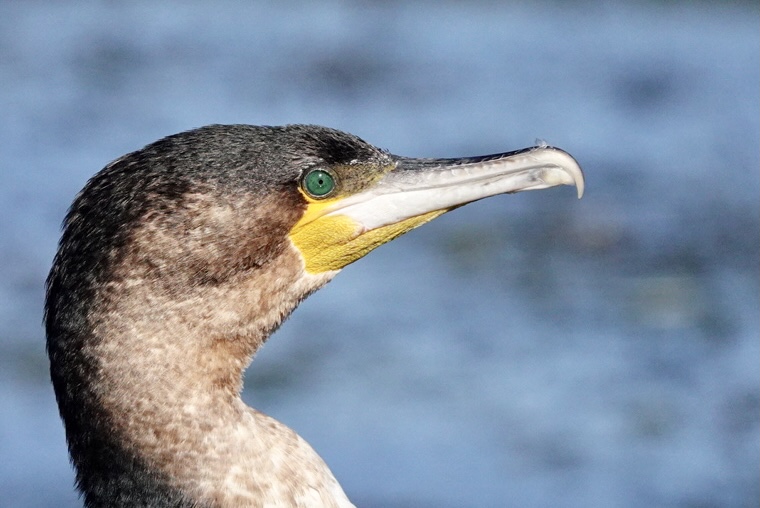Cormorants
Cormorants are not generally regarded as birds that are high on the list of desirable birds to see – unless it’s a potential lifer of course. When you’ve been ‘into’ birding for a while the most that a cormorant is likely to elicit is a slightly off-hand “Oh, there’s another Reed Cormorant” or “Hey, have a look at that Little Grebe just to the right of that White-breasted Cormorant”.
But there’s more to cormorants than meets the eye – or eyes in this case …..
During one recent day trip, I found an opportunity to visit the area which we know as “The Vlei’s”, to the east of the small town of Wilderness, and spent a pleasant hour or so in the bird hide at Langvlei.
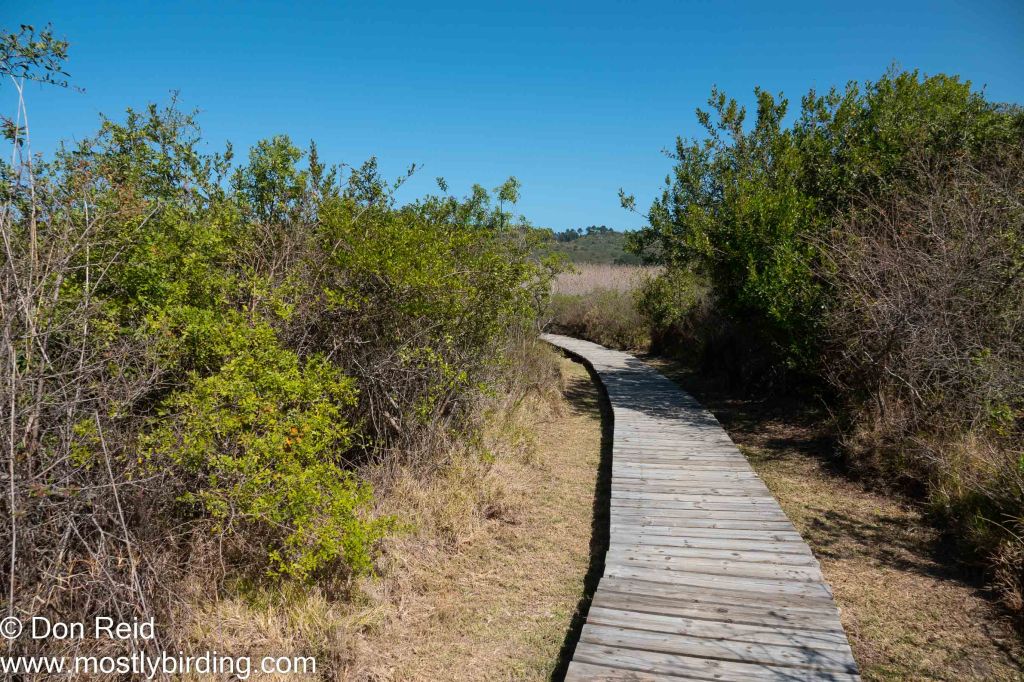
There were numerous waterbirds on the vlei, mostly Coots but also significant numbers of Grebes, more than I can recall seeing in any location before and including all three southern African species – Little Grebes, Great Crested Grebes and a few Black-necked Grebes. However, they were too distant for photography.
Also distant was a long line of dark birds on the water, as the image below shows, and once I had the scope in position, I could see that it consisted of a few hundred Reed Cormorants, again more than I can recall seeing in one location before. As I watched the line, a few of the foremost swimmers flew up out of the water and circled back to the rear of the “queue” where they settled down in line again. I can only assume they were performing some kind of feeding strategy.
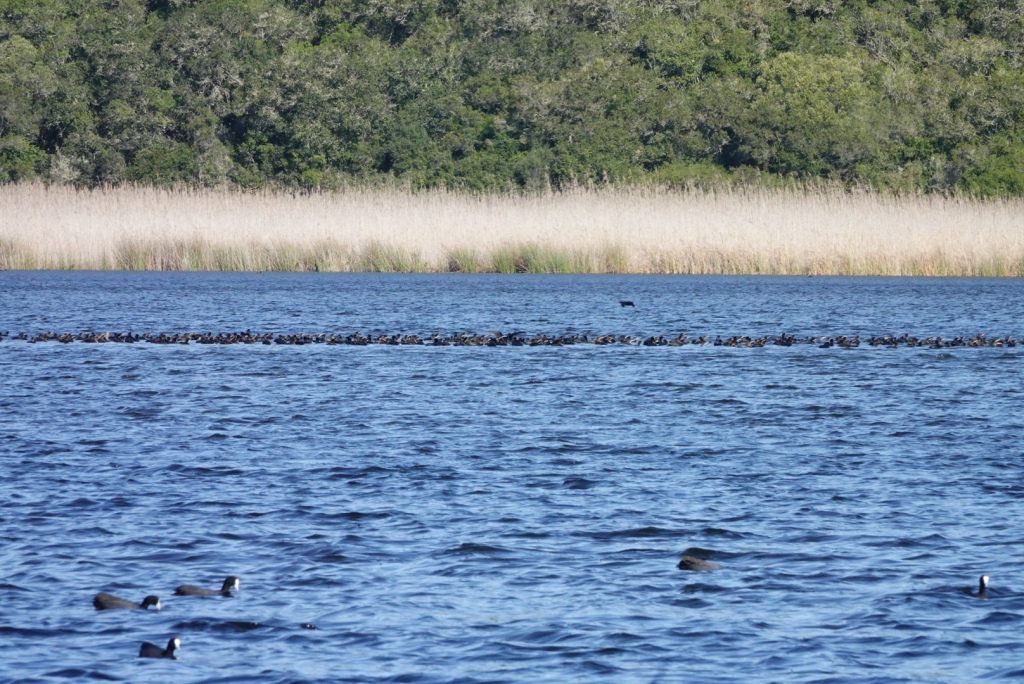
Close to the hide a dead tree stump has been strategically placed and perched on it were two cormorants – the larger White-breasted Cormorant and the somewhat smaller Reed Cormorant.
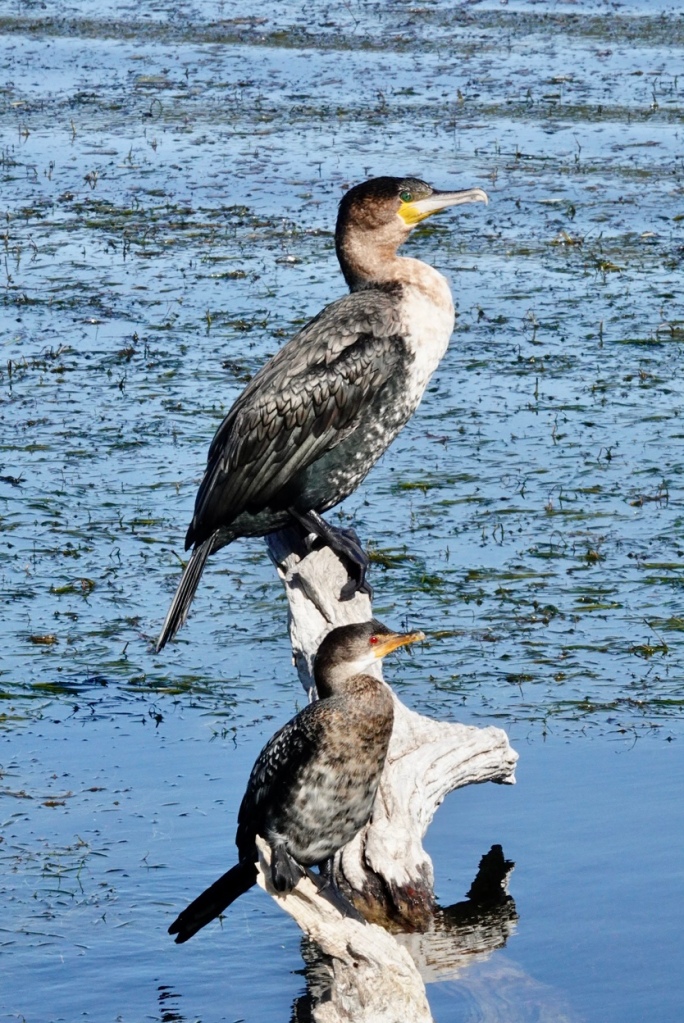
The light was favourable, so I took a few shots then zoomed in on their heads and took a few more. And that’s where the magic came in! In contrast to their rather dull appearance and less than comely shape, the cormorants have some of the most stunning eye colours of the bird world.
White-breasted Cormorant (Witborsduiker) (E-bird : Great Cormorant)
Phalacrocorax lucidus
Starting with the brilliant green eyes of the largest cormorant in our region, commonly found in saltwater and freshwater habitats across southern Africa
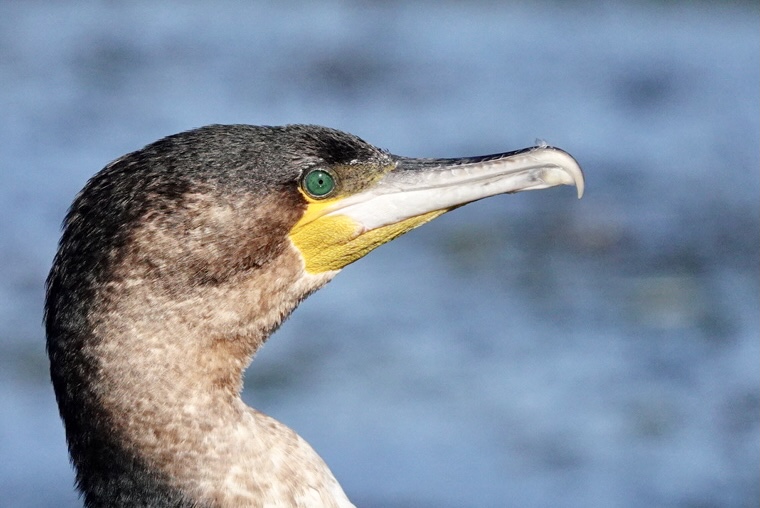
Now this species is somewhat ungainly on land, but once in the water it will outswim Michael Phelps by a long way – that’s if you can get it to swim in a straight line and stay within its lane. And all it uses are its feet which have four toes connected by webbing, which it uses to propel itself most effectively through the water when chasing prey
It uses that hooked bill to secure small fish, which are eaten underwater, while bigger fish are brought to the surface to juggle into a head-first swallowing position.
Worldwide this species is often referred to as Great Cormorant and occurs across 6 continents – I have seen Great Cormorants in Australia, Canada, UK and Europe during our travels abroad
Reed Cormorant (Rietduiker) (E-bird : Long-tailed Cormorant)
Microcarbo africanus
The Reed Cormorant is substantially smaller than the previous species and has a similar distribution across our region, but unlike the White-breasted (Great) Cormorant it is restricted to the African continent, occurring in most of sub-Saharan Africa
And the eyes? Red instead of green, but just as striking!
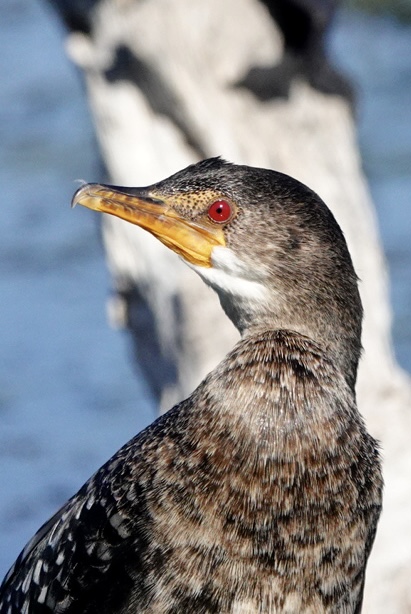
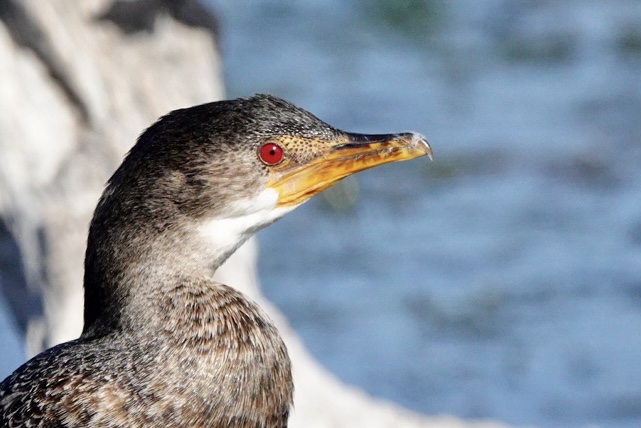
A surprising fact (courtesy of Faansie Peacock’s wonderful birding app called Firefinch) is that the feathers of cormorants are less waterproof than those of other birds – the reason is that this makes them less buoyant and allows them to sink when hunting underwater. This also explains why they spend much of their time out of the water with wings spread to dry. It is also believed that they swallow stones for additional weight, much like scuba divers wearing lead weights on their belts.
Cape Cormorant (Trekduiker)
Phalacrocorax capensis
I wasn’t expecting to find a Cape Cormorant alongside the other two species at Langvlei, as they are generally known as an exclusively marine species, but this one clearly thought a day away from the rough seas would be to its liking
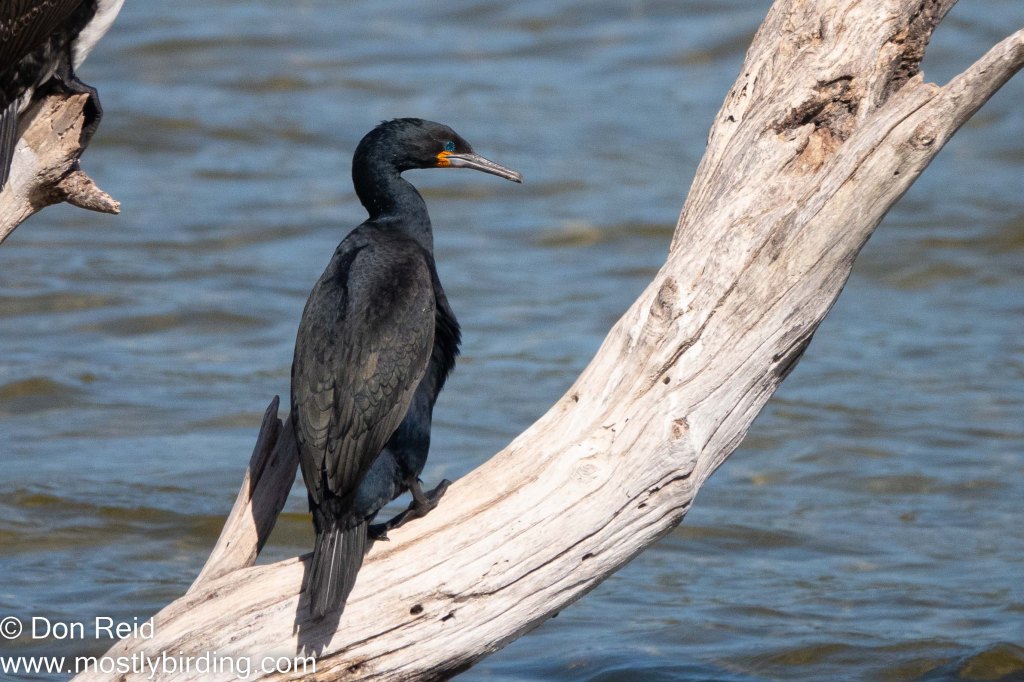
Mossel Bay’s Point is a wonderful place to watch seabirds and Cape Cormorants are regular passers-by (or more appropriately flyers-by) flying low and fast over the ocean, singly or in pairs or in long skeins of up to a couple of dozen at a time.
This is usually late afternoon when we like to get a take-away coffee and sit and watch the sea and its inhabitants, which can be anything from humans surfing and snorkelling to seals, dolphins or whales (in season), while yachts and boats of various types and sizes make their way to and from the small harbour nearby.
I haven’t been able to establish where these passing Cape Cormorants roost, but it is probably one of the quieter stretches of beach further east towards Great Brak River and beyond.
Never mind, just look at those turquoise eyes!
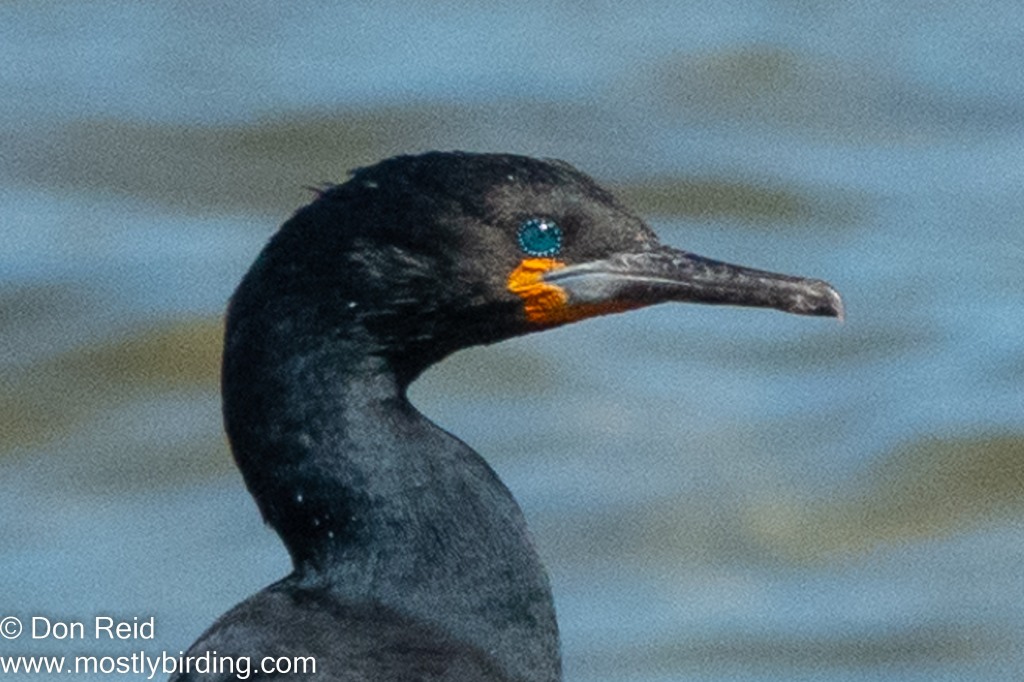
This marine species is distributed along the coastline of South Africa, Namibia and Angola
